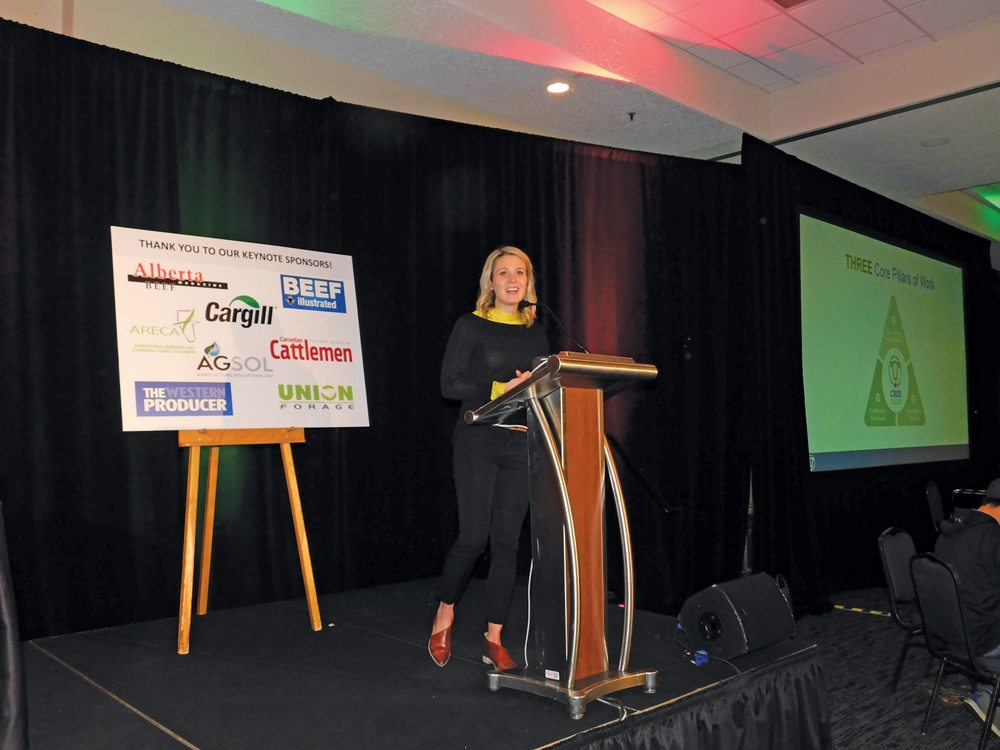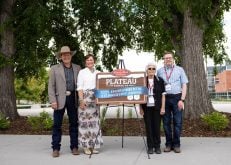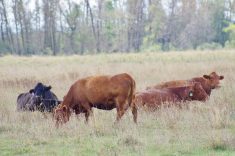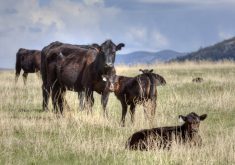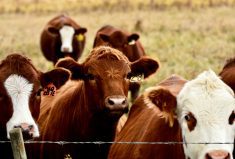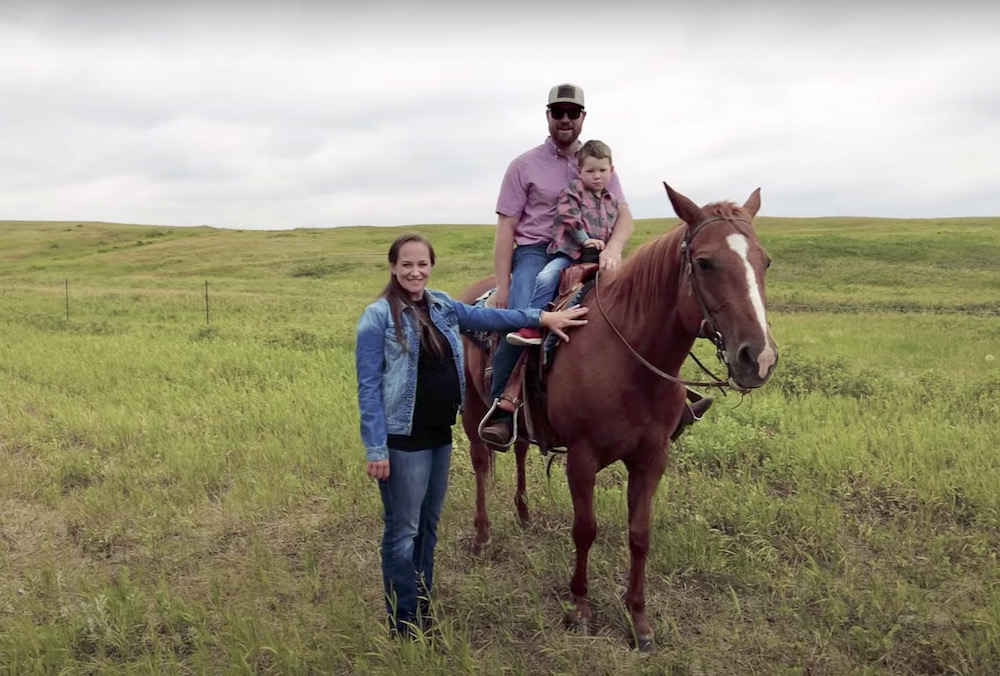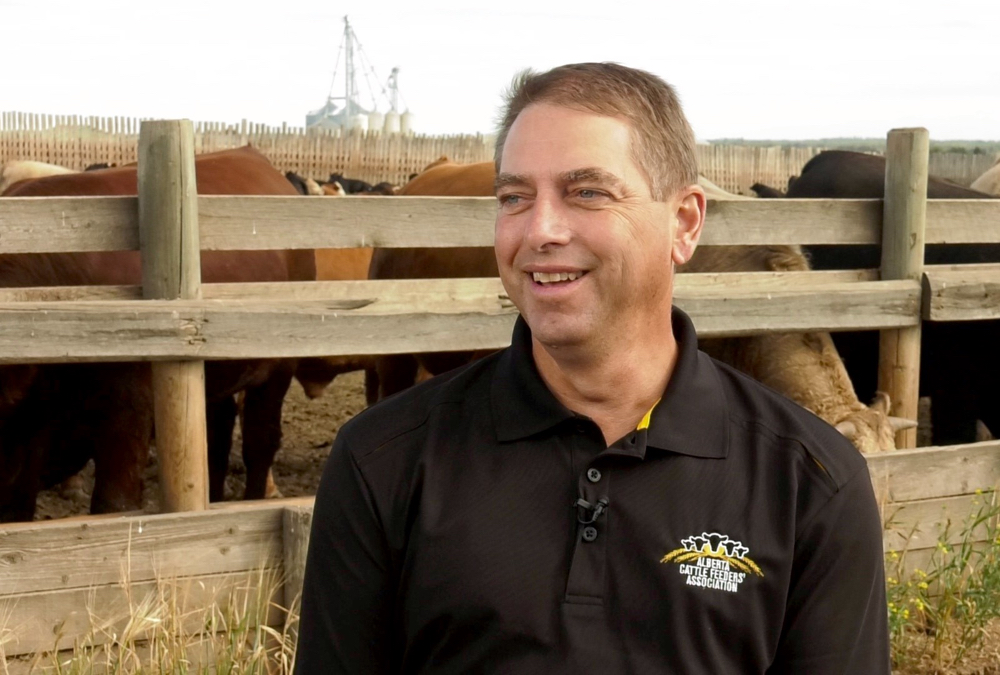After two years of consultations and review, the Canadian Roundtable for Sustainable Beef has rolled out the official list of procedures and standards for producing beef in a humane, environmentally friendly way.
And while the Certified Sustainable Beef Framework looks a lot like the one developed for McDonald’s 2014 pilot project, its launch is historic, said the roundtable’s executive director.
“If there’s a retail, food service, or consumer product that has this type of sustainability messaging or assurance that goes along with it, we now have a Canadian program,” Fawn Jackson said after the unveiling at the Western Canadian Soil Health and Grazing Conference earlier this month.
Read Also

Moo translator and methane measures: There’s an app for that
Dalhousie University researchers use artificial intelligence to create new dairy farm apps that analyze cattle sounds and measure methane.
“It’s not only a Canadian program, it’s the first in the world, so we’re really excited to be launching it.”
She compared it to Earls Restaurants’ highly controversial beef-marketing campaign last year, when the company said it would only use “certified humane” beef. That created a furor because the restaurant chain initially said it couldn’t find enough Canadian beef that qualified and had to source most of it from the U.S.
Canadian beef produced under the framework will be able to make the same claim, said Jackson.
This month’s launch was for producers, with a consumer-focused campaign planned for early in the new year. Eventually, beef raised and processed under the framework will be eligible to use a logo — which is still being developed — that certifies it was produced according to an extensive list of guidelines dealing with things such as how cattle are raised and treated, how the environment is protected, and what’s being done in areas such as workplace safety and producing better-quality beef.
“If we’re going to put something on a package, we need to make sure that it means something on the ground and avoid duplicating efforts,” said Jackson. “We want to support consumers (who want) sustainably sourced beef and support the understanding of sustainable beef production in Canada.”
The logo will attest that producers, backgrounders, feedlots, and processors have adhered to a long list of standards — called indicators — based on the five principles of sustainable beef developed by the Global Roundtable for Sustainable Beef several years ago.
While detailed and extensive, the indicators reflect the best practices followed by most cattle producers, said Jackson. The two years of consultations and testing was aimed at ensuring they don’t bury ranchers under a mountain of paperwork.
The Canadian roundtable set up three committees — one reviewing indicators, another on verification, and a third dealing with marketing and communications — that had 70 members in all. The verification group held four rounds of public consultation (which attracted 250 responses) and the indicators committee reviewed pilots on 21 beef operations across the country. Along with fleshing out the certification process, the roundtable also went beyond the scope of McDonald’s pilot by detailing items such as requirements for choosing and certifying auditors, where records are kept, and the chain of custody requirements for both cattle and beef.
“Our mission was to drive the recognition and advancement of beef sustainability in Canada, with understanding to provide a world-class operation level certification program,” said Jackson, adding a report released last year confirmed Canadian ranchers are ranked as global leaders in sustainable beef production.
The standards are outcome based, which means it’s not the process but measurable results that count.
“This is a new approach, so it was a little harder for the indicator committee to tackle this, but I think it did a good job,” said Jackson.
While some of the indicators — such as air quality or carbon capture — can’t be precisely measured in practical terms, every one of the dozens of protocols will be given a score, ranging from 0 to 4. A score of 1 (also called Achievement) is the minimum standard and auditing will be conducted over a five-year cycle. The first year is a full audit, followed by a partial records assessment, and then three self-assessments.
“After the first audit, the certification body will assess the risk and put you in the risk categories,” said Monica Hadarits, the roundtable’s director of programs and verifications.
The program won’t require producers to do a lot of new things, said Jackson, adding she is confident they can meet the standard.
Cattle will be tracked through the supply chain in order to be able to qualify under the program. This will be done by certifiers who have applied to the program, including Verified Beef Production Plus (VBP+) and Where Food Comes From, an independent third-party auditor.
Each province will set its own fees. Alberta cow-calf producers will pay $650 for the initial audit and the rest of the five-year cycle, while feedlot operations will pay $850.
What’s not known is whether all of this will put more money in the pockets of ranchers who decide to join the program (which is entirely voluntary).
“Right now, there is no guarantee of anything financially,” said Page Stuart, a representative of the Alberta Cattle Feeders Association on the roundtable’s board.
“We do know that customers want to know what we do and that we’re engaged in responsible beef production.”
And it will be awhile before packages of beef or menus will bear a certified sustainable beef logo.
“Right now, there’s a mass balance approach. It’s about the per cent of product that comes from sustainable sources, not creating a differentiated product,” said Emily Murray, another board member and general manager of Cargill’s plant in Spruce Grove that makes McDonald’s beef patties.
During its pilot, the fast-food giant could only say that a portion of the beef in a Big Mac came from cows raised and processed in a verified sustainable manner. That path will also be followed under the framework. Once it’s up and running, a global certification process called ISEAL will be used to track how much beef is being produced under the roundtable’s process. (This same process is used, for example, to estimate how much recycled content is in a paper or cardboard product.)
But there’s also an effort to produce a separate line of certified sustainable beef — and possibly make money off it.
Cargill is participating in a “Canadian Beef Sustainability Acceleration” pilot in which producers enrol in VBP+ and their cattle are tracked by BIXS (Beef InfoXchange System). Loblaw, McDonald’s Canada, and Cara Operations’ Swiss Chalet chain are funding that pilot and the hope is that it will lead to certified beef products that command higher prices, with some of those premiums going to participating ranchers.
To learn more about the Certified Sustainable Beef Framework or to become verified, producers should contact their VBP+ group or go to the Canadian Roundtable for Sustainable Beef website.


